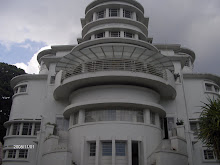Period English of Literatures
Ami Fatimah Mulyati
0807333
The term English literature refers to literature written in the English language, including literature composed in English. In other words, English literature is as diverse as the varieties and dialects of English spoken around the world. In spite of many discrepancies and in inconsistencies, some terms and criteria of classification have established themselves in Anglo-American literary criticism. There are some criteria of literature based on their classifications:
1. The history of language: Old English and Middle English,
2. National history: Colonial Period,
3. Politics and Religion: Elizabethan and Purity age, and
4. Art: Renaissance and Modernism
Period of English Literature
Old English Period 5th-11th century
Middle English Period 12th-15th century
Renaissance 16th-17th century
Augustan Age 18th century
Romantic Period First half of 19th century
Victorian Age Second half of 19th century
Modernism First to second world war
Postmodernism 1960s and 1970s
Period of American Literature
Colonial or Puritan Age 17th-18th century
Romantic Period and Transcendentalism First half of 19th century
Realism and Naturalism Second half of 19th century
Modernism First to second world war
Postmodernism 1960s and 1970s
Old English
Old English appeared in the early Middle Ages. It is regarded as beginning with the invasion of Britain by Germanic (Anglo-Saxon) tribes in the fifth century AD and lasting until the French invasion under William the Conqueror in 1066. The earliest texts written between the eight and the eleventh century are called Old English or Anglo-Saxon.the example of this literature texts are The Seafarer (9th century), the Wanderer (9th-10th century), the mythological Beowulf (8th century) or The Battle of Meldon (10th century).
Middle English Period
The Middle English Literature had occurred in the first time when Edward III begun a war to enforce his claims on the throne of France. In this time there were some famous poems and it called “long Poems” with religious contents such as Piers Plowman (1367-1370), Sir Gwain and the Green Knight (14th century), le Morte d’Arthur (1470), Canterbury Tales (1387), Il Decamerone (1349-1351).
Renaissance
It also called the Early New English Period, a term which focused on the history of the language and the Elizabethan Age (Queen Elizabeth I) or Jacobean Age (King James), divisions based on political rule. Particularly notable in this period is the revival of classical genres, such as the epic with Edmund Spencer’s (1552-1599), Faerie Queene (1590-1596), and the drama with William Shakespeare (1564-1616), Christopher Marlowe (1564-1593) and others.
Augustan Age
The next period is commonly regarded as an independent epoch is the Eighteen Century, which is also referred to as the Neoclassical, Golden or Augustan Age. In this period literary theory was adapted to suit contemporary culture. This was also a time of influential changes in the distribution of texts, including the development of novel as a genre and the introduction of newspaper and literary magazines such as The Tatler (1709-1711) and The Spectator (1711-1714). This time marked the beginning of novel as a new literary genre.
Puritan or Colonial Age
This period can be seen as the first literary phenomenon on the North American continent. Early American texts reflect, in their histeriographic and theological orientation, the religious roots of American colonial times. Cotton Mather’s (1663-1728) and John Winthrop’s (1588-1649) notes in the diary form and Anna Bradstreet’s (1612-1672) poetry are among the most important source for an understanding of the early colonies.
Romanticism
In the end of the eighteen century, Romanticism marks the beginning of the new period in traditional English literary history. The first edition of Lyrical Ballads (1798) by William Wordsworth (1770-1850) and Samuel Taylor Coleridge (1772-1834) is commonly considered to the beginning of a new period in which Nature and individual, emotional experience play an important role. The most important representative of English Romanticism include William Blake, John Keats, Percy Bysshe Shelley and Mary Shelley.
Modernism
It can be seen as a reaction to the realist movements of late nineteenth century. It discovered innovated narrative techniques such as stream of-consciousness or structural forms such as collage and literary Cubism. The literary texts in this period include Ulysses, Finnegans wake, Mrs. Dollaway, To The Lighthouse, Three lives, The Cantos, The waste Land and The Sound and The Fury.
Postmodernism
This literary movement of the second half of the twentieth century indirectly deals with Nazi crimes and structurally developing the approach of Modernism. The most famous texts in this period are Lost in the Funhouse, The Crying of lot, Doubled or Nothing, The French Leutnant’s Woman. And the Dramas are Travesties (1974) and Waiting for Godot (1952).
references
Klarer, Mario.1998.An Introducing to Literary Studies.London:Routledge
Langganan:
Posting Komentar (Atom)


Tidak ada komentar:
Posting Komentar